Abstract
The impact on vitamin A deficiency (VAD), wasting malnutrition, and excessive childhood mortality of two alternative approaches-nutrition education and mega-dose capsule distribution (6-12-month-olds: 100,000 IU; 1-5-year-olds: 200,000 IU)-in communities in Nepal are compared. Approximately 40,000 children from 75 locations in seven districts in two ecological settings (lowland and hills) took part in the study and were randomly allocated to intervention cohorts or a control group. At 24 months after the implementation of the project the reduction of risk for xerophthalmia was greater among children whose mothers were able to identify vitamin-A-rich foods (relative risk (RR) = 0.25; 95% confidence interval (CI) = 0.10-0.62) than among the children who received mega-dose capsules (RR = 0.59; 95% CI = 0.41-0.84). The risk of mortality at 2 years was reduced for both the nutrition education (RR = 0.64; 95% Cl = 0.48-0.86) and capsule distribution (RR = 0.57; 95% CI = 0.42-0.77) cohorts. The nutrition education programme was, however, more expensive to deliver than the capsule distribution programme. High rates of participation for children in the supplementation programme were achieved quickly. The nutrition education messages also spread rapidly throughout the study population (regardless of intervention cohort assignment). Practices, however, were slower to change. In communities where maternal literacy was low and channels of communication were limited the capsule distribution programme appeared to be more economical. However, there are economies of scale for nationwide education programmes that do not exist for capsule distribution programmes. Although nutrition education provides economies of scale and the promise of long-term sustainability, a comprehensive national programme requires both dietary supplementation and nutrition education components.
Full text
PDF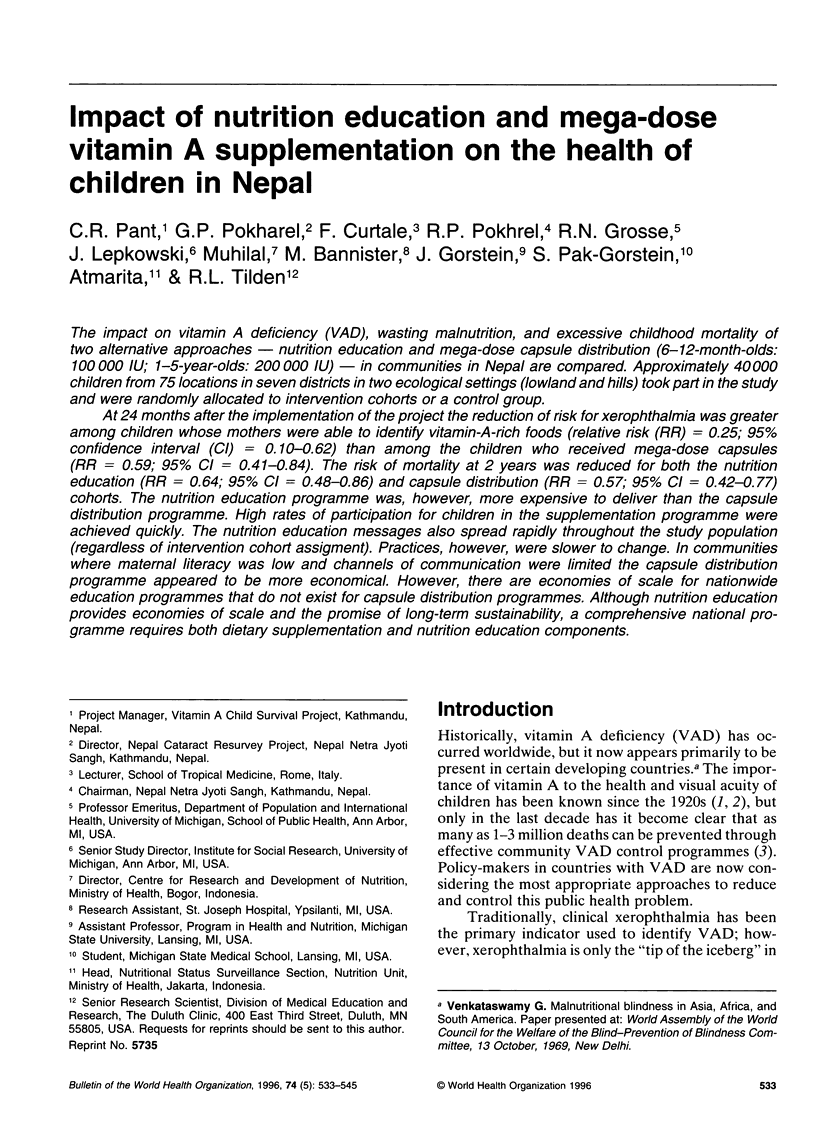
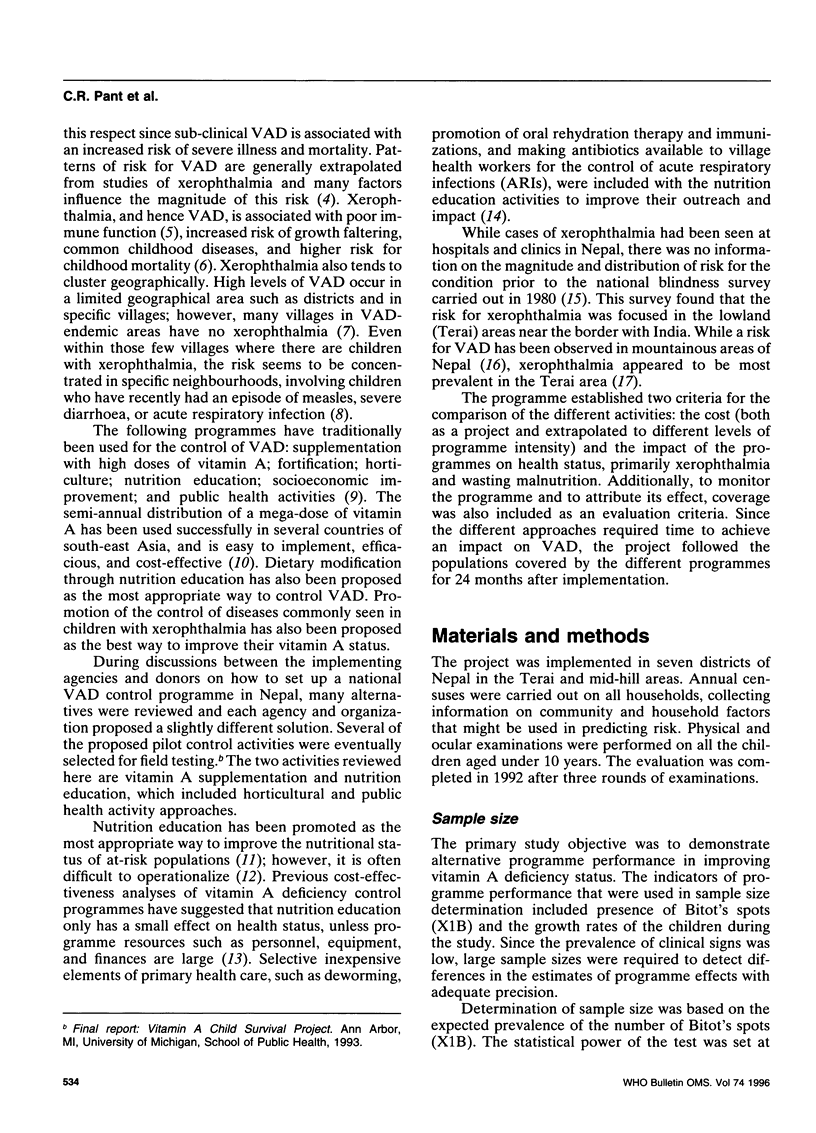

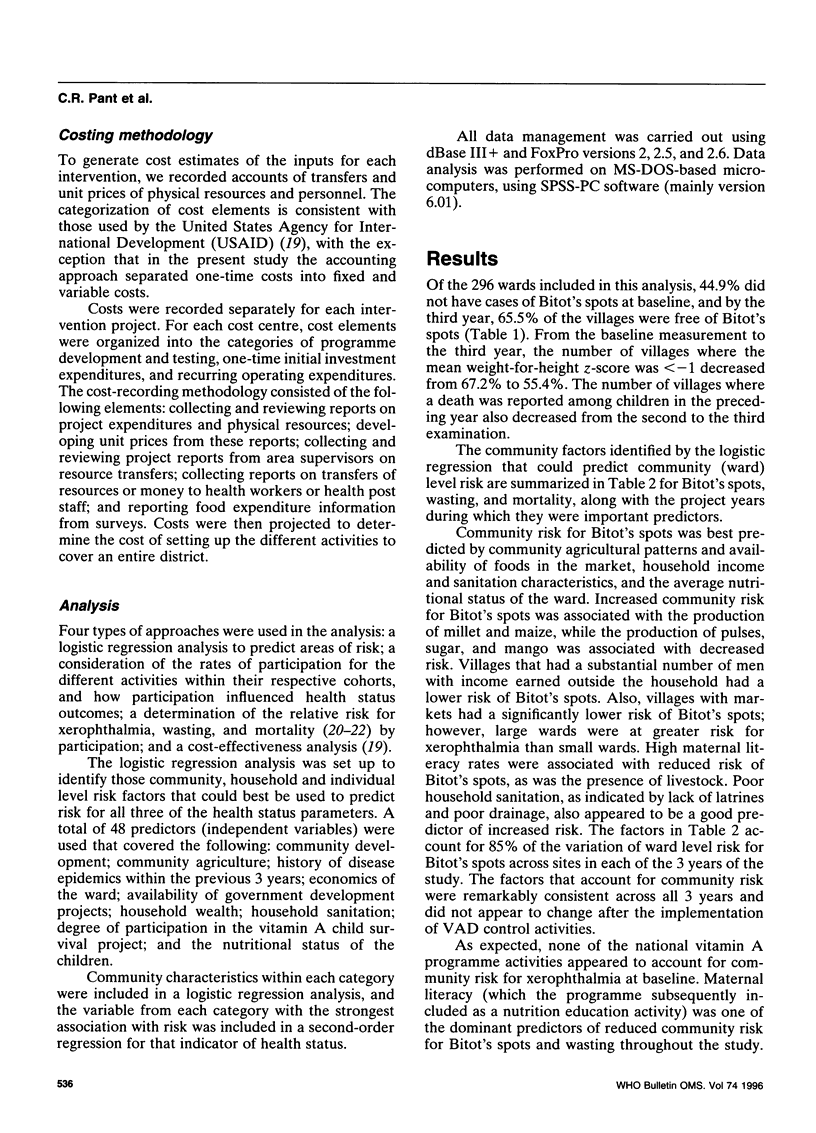

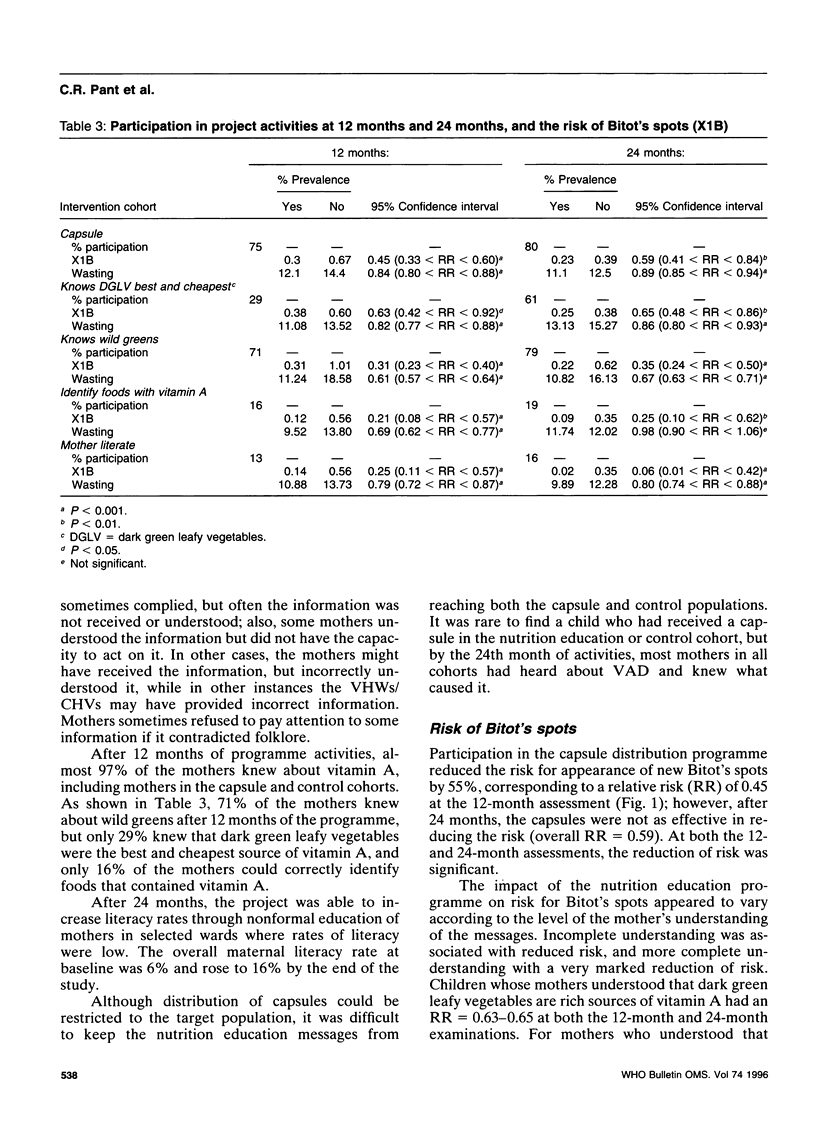
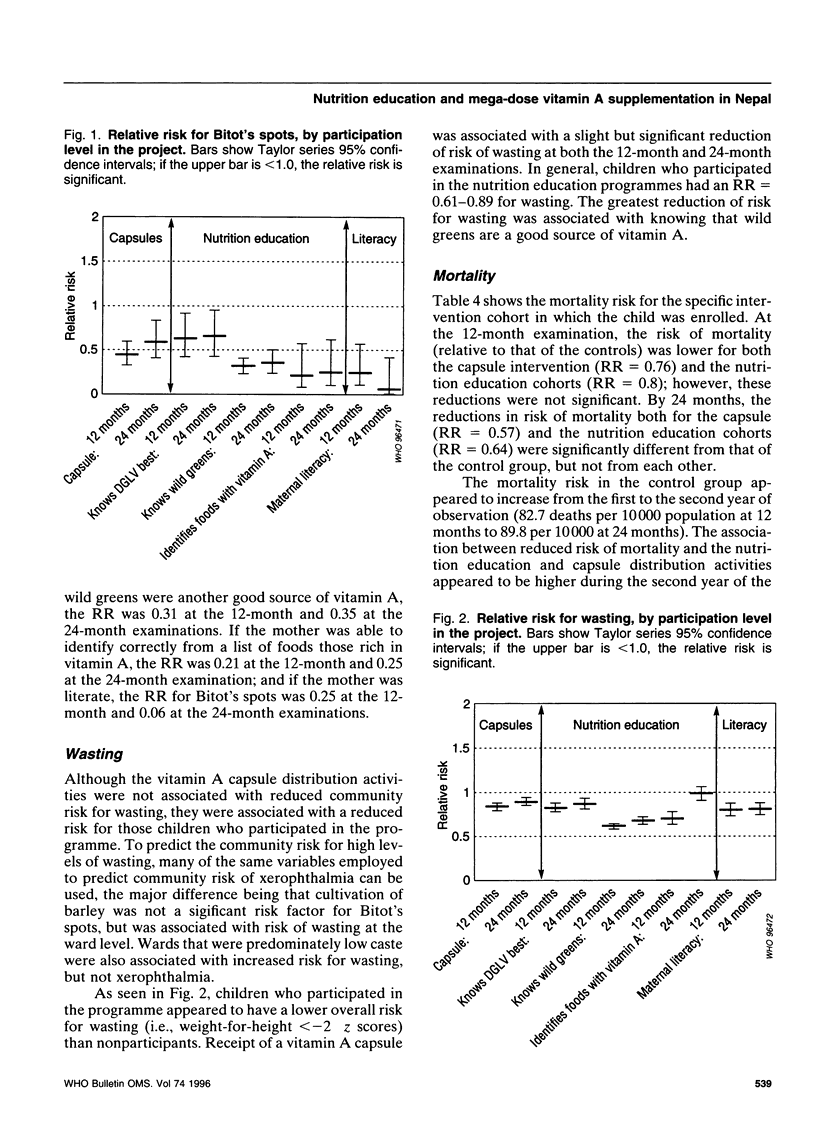
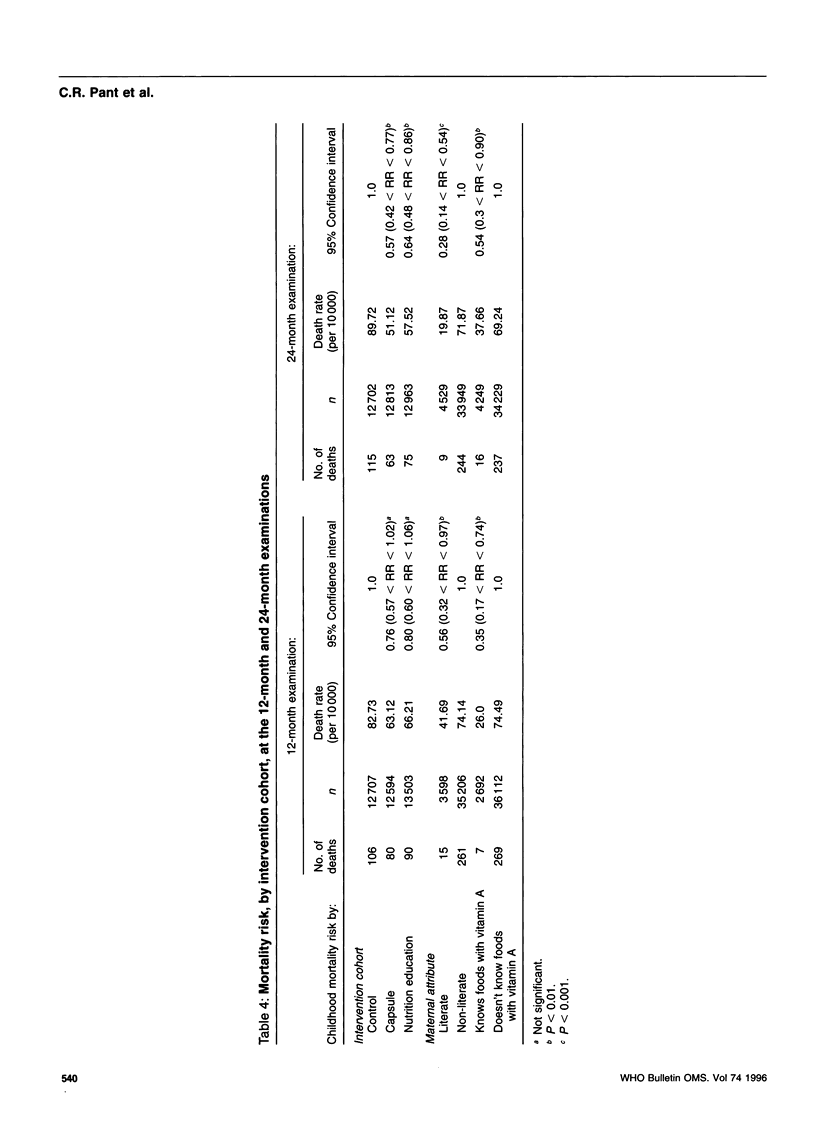


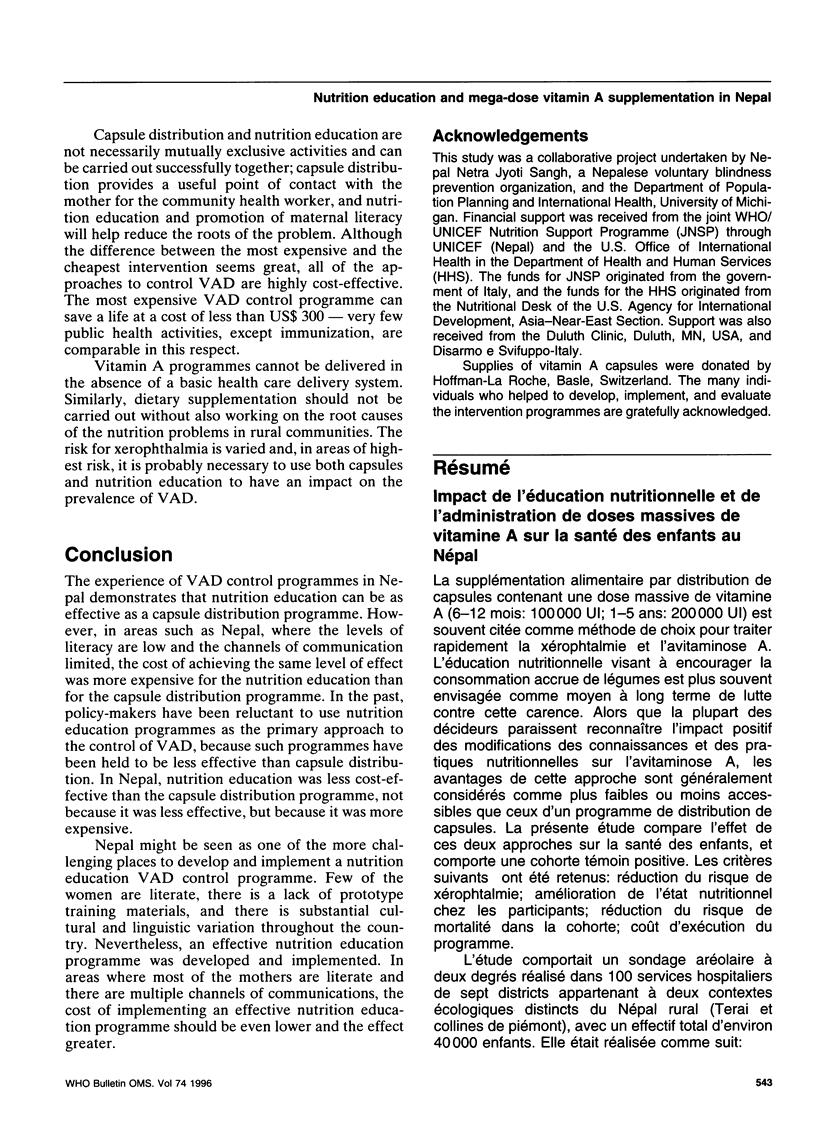
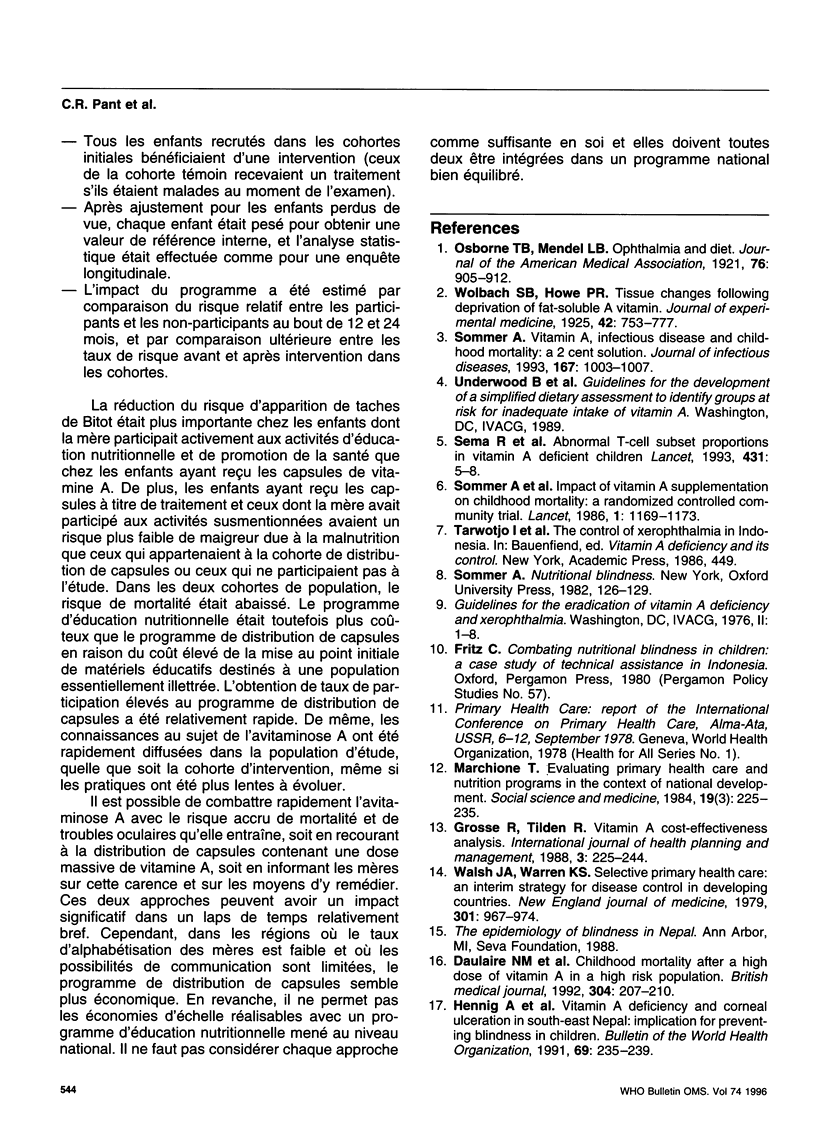
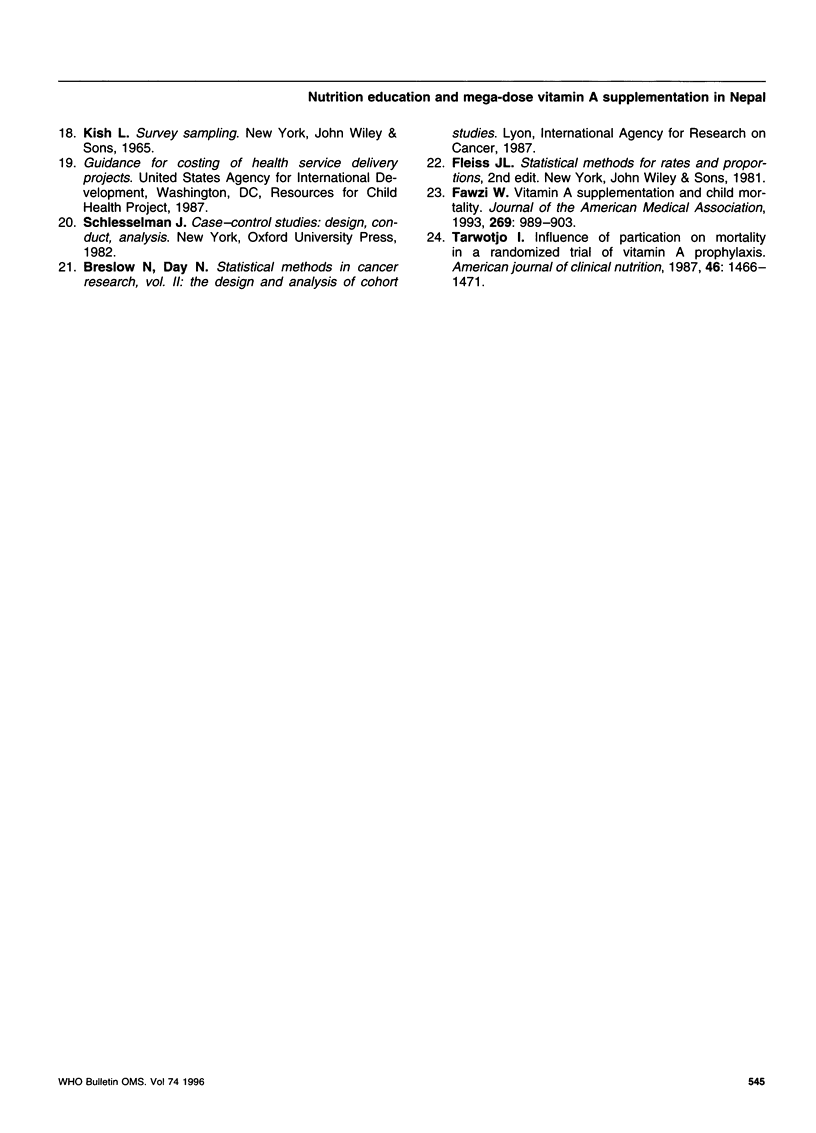
Selected References
These references are in PubMed. This may not be the complete list of references from this article.
- Daulaire N. M., Starbuck E. S., Houston R. M., Church M. S., Stukel T. A., Pandey M. R. Childhood mortality after a high dose of vitamin A in a high risk population. BMJ. 1992 Jan 25;304(6821):207–210. doi: 10.1136/bmj.304.6821.207. [DOI] [PMC free article] [PubMed] [Google Scholar]
- Hennig A., Foster A., Shrestha S. P., Pokhrel R. P. Vitamin A deficiency and corneal ulceration in south-east Nepal: implications for preventing blindness in children. Bull World Health Organ. 1991;69(2):235–239. [PMC free article] [PubMed] [Google Scholar]
- Marchione T. J. Evaluating primary health care and nutrition programs in the context of national development. Soc Sci Med. 1984;19(3):225–235. doi: 10.1016/0277-9536(84)90214-4. [DOI] [PubMed] [Google Scholar]
- Sommer A., Tarwotjo I., Djunaedi E., West K. P., Jr, Loeden A. A., Tilden R., Mele L. Impact of vitamin A supplementation on childhood mortality. A randomised controlled community trial. Lancet. 1986 May 24;1(8491):1169–1173. doi: 10.1016/s0140-6736(86)91157-8. [DOI] [PubMed] [Google Scholar]
- Sommer A. Vitamin A, infectious disease, and childhood mortality: a 2 solution? J Infect Dis. 1993 May;167(5):1003–1007. doi: 10.1093/infdis/167.5.1003. [DOI] [PubMed] [Google Scholar]
- Tarwotjo I., Sommer A., West K. P., Jr, Djunaedi E., Mele L., Hawkins B. Influence of participation on mortality in a randomized trial of vitamin A prophylaxis. Am J Clin Nutr. 1987 Jun;45(6):1466–1471. doi: 10.1093/ajcn/45.6.1466. [DOI] [PubMed] [Google Scholar]
- Walsh J. A., Warren K. S. Selective primary health care: an interim strategy for disease control in developing countries. N Engl J Med. 1979 Nov 1;301(18):967–974. doi: 10.1056/NEJM197911013011804. [DOI] [PubMed] [Google Scholar]
- Wolbach S. B., Howe P. R. TISSUE CHANGES FOLLOWING DEPRIVATION OF FAT-SOLUBLE A VITAMIN. J Exp Med. 1925 Nov 30;42(6):753–777. doi: 10.1084/jem.42.6.753. [DOI] [PMC free article] [PubMed] [Google Scholar]


